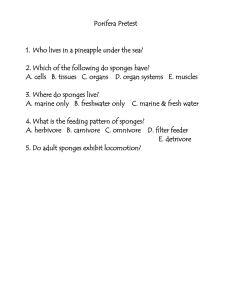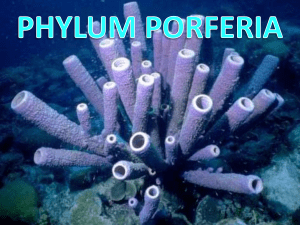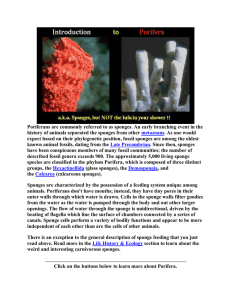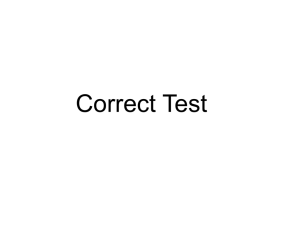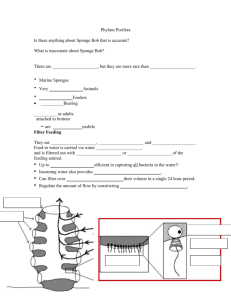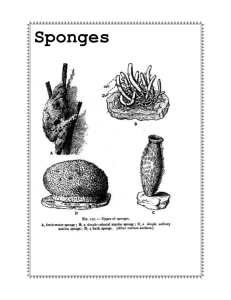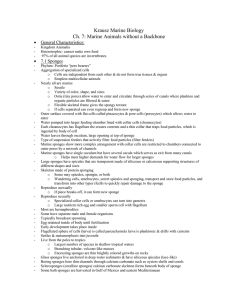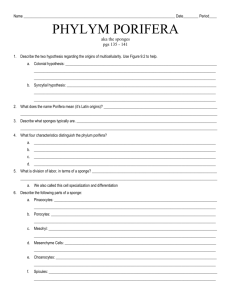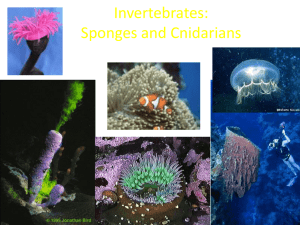Sponges are filter feeders
advertisement
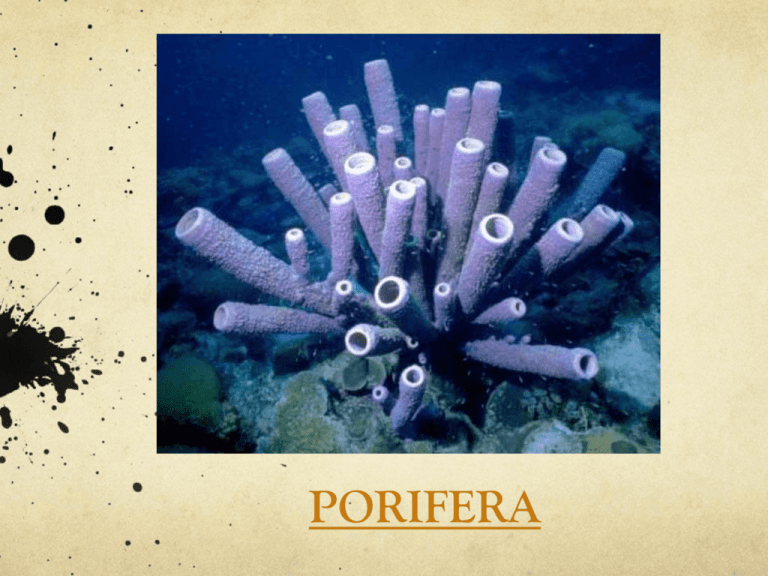
PORIFERA Porifera Have specialized cells, but no tissues 2 cell layers Asymetrical Marine and freshwater Sessile as adults Larvae are motile Bodies are filled with pores for water circulation Water exits thru the……. choanocytes Feeding Sponges are filter feeders Food particles stick to collar of choanocytes where it is digested Amebocytes are specialized cells in sponges that can roam to pick up food from choanocytes & distribute it to all other parts of the sponge They also transport carbon dioxide & wastes away from sponge cells Sponges have no mouth, guts, tissues, or organs There functions are carried out by a few specialized cells systems Sponges carry out basic functions, such as feeding and circulation, by moving water through their bodies Still, if you carve ‘em up, they come back for more!! It’s more amazing than that. If you mix groups of sponges together, they will usually reorganize into their original groups. Reproduction: Asexual vs. sexual Damage to a sponge can actually promote asexual reproduction, as “parts” can land elsewhere and form new sponges. Sponges have a simple skeleton Some skeletons are made of tiny Spicules, which are spiked shaped structure made of calcium carbonate or glasslike silica Other support structures are made of Spongin (flexible protein fibers) Sponge sizes Porifera reproduction Asexually: by external buds that break off & form new sponges or stay attached to form sponge colonies (budding) Sexually: Video clip Sponges are hermaphrodites (produce both eggs & sperm) they exchange sperm & cross-fertilize eggs during sexual reproduction Free-swimming larva that forms from the Zygote, eventually settling on the bottom for a sessile life

